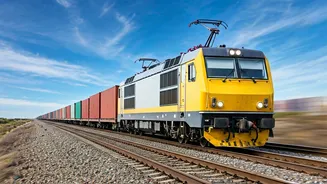Production Under Pressure
Small steel manufacturers in India have found themselves grappling with reduced output lately. This is largely due to a confluence of factors, most notably
a dip in overall demand for steel products. Simultaneously, the prices for steel have experienced a downward trend. These two elements combined are putting significant pressure on profitability, making it less attractive for these smaller players to maintain previous production levels. The economics of steelmaking is becoming increasingly challenging. With demand slowing and prices shrinking, the margins are squeezed, making it tough for these businesses to operate at full capacity. The industry is witnessing a recalibration, with companies having to make tough choices to stay afloat. Some are cutting down on production, while others are strategizing ways to streamline operations and reduce costs. Overall, the landscape for steel production in India, particularly for small scale manufacturers, is currently facing headwinds.
Demand's Diminishing Footprint
The weakness in demand is a significant factor behind the production cuts. Several variables could explain the softening demand. The first key driver is the state of the Indian economy itself, which is slowing down in specific sectors. This translates directly into reduced consumption of steel across various industries, including construction, manufacturing, and infrastructure. Economic downturns naturally depress demand. There is also a possibility that external market dynamics have caused the demand drop. The global economy's fluctuating state influences domestic demand. Fluctuations in export markets and the pricing of imports impact local demand too. Also, seasonal factors could be temporarily contributing to the decline. Certain periods might historically witness lower steel consumption due to things like monsoon seasons, which often impact construction activity. Overall, the demand side seems to be the primary reason behind production cuts.
Price Plunge Impacts
Alongside weakening demand, the falling prices of steel are complicating matters for these manufacturers. This decline in price affects profitability directly. When prices are down, the revenue generated from each ton of steel produced decreases. Production becomes less lucrative, which directly affects the ability of these smaller companies to maintain their previous outputs. Multiple forces can influence steel prices, including global market trends, the cost of raw materials, and the overall supply and demand dynamics within the domestic market. If prices decline, it may signal an oversupply or weaker-than-anticipated demand. For the steelmakers, falling prices lead to a dilemma. They can either reduce production to balance supply and demand, or they may cut costs in some other way. This can involve optimizing the use of resources or reducing expenses to keep operations profitable. Whatever measures the small-scale manufacturers take, their actions are driven by falling prices and their need to adapt to the shifting market conditions.
The Road Ahead
The near future of India's small steel producers is very dependent on how these various elements play out. The recovery of demand is a key factor. If economic conditions pick up or specific steel-consuming sectors show renewed activity, demand should increase. This could then help the manufacturers return to more normal production levels. The future also rests on how the prices of steel move forward. Should prices stabilize or show a rise, profitability will increase, encouraging higher production. The long-term outlook is also relevant. The steel industry needs to adjust to the changing conditions. Some companies may seek to streamline operations, adopt new technologies, and invest in more efficient production methods. Also, government support could become vital. Policies aimed at boosting the steel sector or at supporting the smaller manufacturers might help them face these challenges. Overall, the future for these smaller steelmakers will be determined by the changing interaction of these economic, market, and strategic factors.










